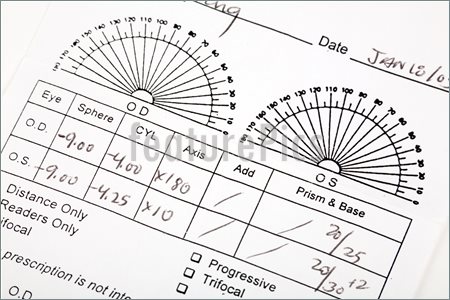In addition to the basic information like patient name, date, and the doctor’s signature there are other terms you may see. The information is set up in columns and rows.
OD (Oculus Dexter) – is Latin for the right eye
OS (Oculus sinister)-is Latin for the left eye
OU (Oculi Uterque) – is Latin for both eyes
SPH (sphere)-The correction for nearsightedness or farsightedness is spherical equal in all meridians of the eye. Always has a plus (+) or minus (-).
CYL (cylinder)-This indicates the amount of lens power for astigmatism and the difference in the greatest and weakest powers of the eye usually separated by 90°.
Axis(x 180) Read as “axis 180” this indicates the angle in degrees from 0 to 180.
Add- stands for additional corrections such as additional power or bifocals.
Progressing or multi-focal- If you’ve got an eyeglass prescription for bifocal or multi-focal/progressives, your lens power corrects for near, far, and sometimes intermediate-range vision. You’ll have a number in the ADD column.
Prism – is the correction used for some people with diplopia or double vision.
D (diopter)-The measurement of lens power. The higher the number the stronger the script.
Base-The base relates to the standard curvature of the frame also known as the wraparound effect. The higher your prescription number the more wrap around the frame is. On average, eyeglasses should have no more than a base of 4 to 6.
DS (diopter sphere)-indicates that the left eye’s corrections are totally spherical in nature with no astigmatism.
PD (Pupillary Distance) is the measurement of the distance between the pupils.
#eyegotcha
#PittsburghEyeCare
#PittsburghOptometrist
Sources:

